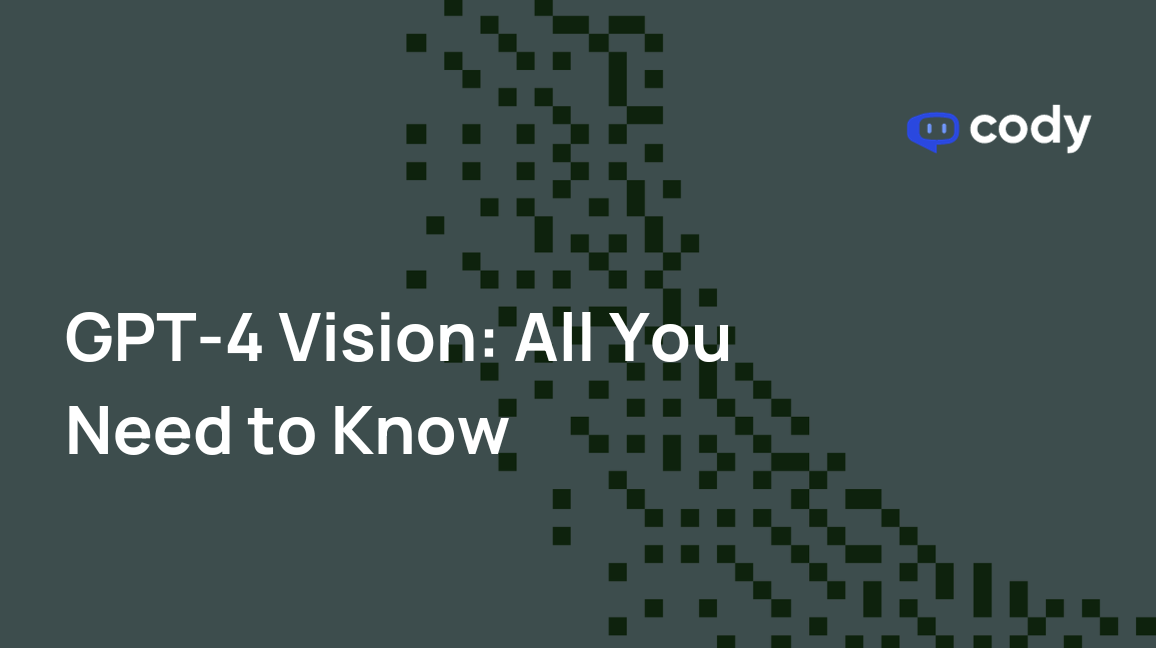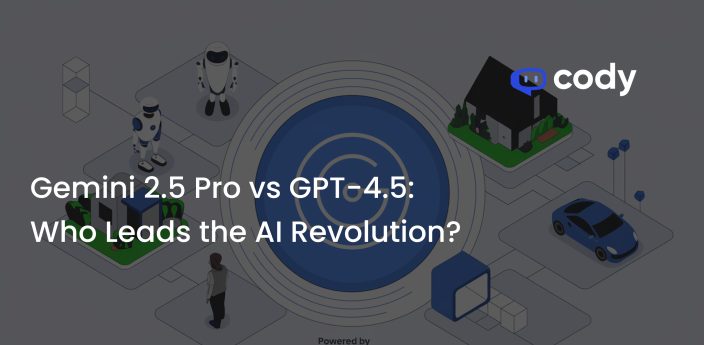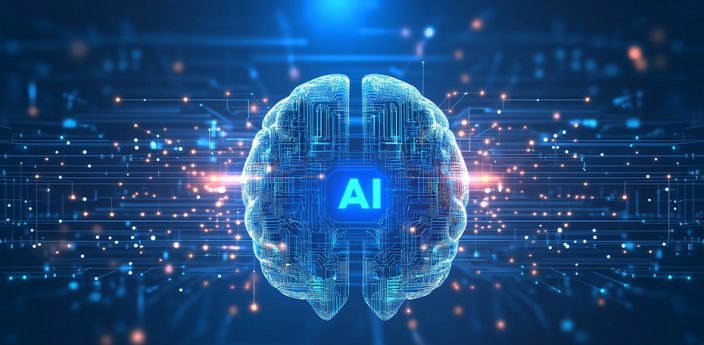
GPT-4 Vision: What is it Capable of and Why Does it Matter?
Enter GPT-4 Vision (GPT-4V), a groundbreaking advancement by OpenAI that combines the power of deep learning with computer vision.
This model goes beyond understanding text and delves into visual content. While GPT-3 excelled at text-based understanding, GPT-4 Vision takes a monumental leap by integrating visual elements into its repertoire.
In this blog, we will explore the captivating world of GPT-4 Vision, examining its potential applications, the underlying technology, and the ethical considerations associated with this powerful AI development.
What is GPT-4 Vision (GPT-4V)?
GPT-4 Vision, often referred to as GPT-4V, stands as a significant advancement in the field of artificial intelligence. It involves integrating additional modalities, such as images, into large language models (LLMs). This innovation opens up new horizons for artificial intelligence, as multimodal LLMs have the potential to expand the capabilities of language-based systems, introduce novel interfaces, and solve a wider range of tasks, ultimately offering unique experiences for users. It builds upon the successes of GPT-3, a model renowned for its natural language understanding. GPT-4 Vision not only retains this understanding of text but also extends its capabilities to process and generate visual content.
Here’s a demo of the gpt-4-vision API that I built in@bubble in 30 min.
It takes a URL, converts it to an image, and sends it through the Vision API to respond with custom landing page optimization suggestions. pic.twitter.com/dzRfMuJYsp
— Seth Kramer (@sethjkramer) November 6, 2023
This multimodal AI model possesses the unique ability to comprehend both textual and visual information. Here’s a glimpse into its immense potential:
Visual Question Answering (VQA)
GPT-4V can answer questions about images, providing answers such as “What type of dog is this?” or “What is happening in this picture?”
started to play with gpt-4 vision API pic.twitter.com/vZmFt5X24S
— Ibelick (@Ibelick) November 6, 2023
Image Classification
It can identify objects and scenes within images, distinguishing cars, cats, beaches, and more.
Image Captioning
GPT-4V can generate descriptions of images, crafting phrases like “A black cat sitting on a red couch” or “A group of people playing volleyball on the beach.”
Image Translation
The model can translate text within images from one language to another.
Creative Writing
GPT-4V is not limited to understanding and generating text; it can also create various creative content formats, including poems, code, scripts, musical pieces, emails, and letters, and incorporate images seamlessly.
Read More: GPT-4 Turbo 128K Context: All You Need to Know
How to Access GPT-4 Vision?
Accessing GPT-4 Vision is primarily through APIs provided by OpenAI. These APIs allow developers to integrate the model into their applications, enabling them to harness its capabilities for various tasks. OpenAI offers different pricing tiers and usage plans for GPT-4 Vision, making it accessible to many users. The availability of GPT-4 Vision through APIs makes it versatile and adaptable to diverse use cases.
How Much Does GPT-4 Vision Cost?
The pricing for GPT-4 Vision may vary depending on usage, volume, and the specific APIs or services you choose. OpenAI typically provides detailed pricing information on its official website or developer portal. Users can explore the pricing tiers, usage limits, and subscription options to determine the most suitable plan.
What is the Difference Between GPT-3 and GPT-4 Vision?
GPT-4 Vision represents a significant advancement over GPT-3, primarily in its ability to understand and generate visual content. While GPT-3 focused on text-based understanding and generation, GPT-4 Vision seamlessly integrates text and images into its capabilities. Here are the key distinctions between the two models:
Multimodal Capability
GPT-4 Vision can simultaneously process and understand text and images, making it a true multimodal AI. GPT-3, in contrast, primarily focused on text.
Visual Understanding
GPT-4 Vision can analyze and interpret images, providing detailed descriptions and answers to questions about visual content. GPT-3 lacks this capability, as it primarily operates in the realm of text.
Content Generation
While GPT-3 is proficient at generating text-based content, GPT-4 Vision takes content generation to the next level by incorporating images into creative content, from poems and code to scripts and musical compositions.
Image-Based Translation
GPT-4 Vision can translate text within images from one language to another, a task beyond the capabilities of GPT-3.
What Technology Does GPT-4 Vision Use?
To appreciate the capabilities of GPT-4 Vision fully, it’s important to understand the technology that underpins its functionality. At its core, GPT-4 Vision relies on deep learning techniques, specifically neural networks.
The model comprises multiple layers of interconnected nodes, mimicking the structure of the human brain, which enables it to process and comprehend extensive datasets effectively. The key technological components of GPT-4 Vision include:
1. Transformer Architecture
Like its predecessors, GPT-4 Vision utilizes the transformer architecture, which excels in handling sequential data. This architecture is ideal for processing textual and visual information, providing a robust foundation for the model’s capabilities.
2. Multimodal Learning
The defining feature of GPT-4 Vision is its capacity for multimodal learning. This means the model can process text and images simultaneously, enabling it to generate text descriptions of images, answer questions about visual content, and even generate images based on textual descriptions. Fusing these modalities is the key to GPT-4 Vision’s versatility.
3. Pre-training and Fine-tuning
GPT-4 Vision undergoes a two-phase training process. In the pre-training phase, it learns to understand and generate text and images by analyzing extensive datasets. Subsequently, it undergoes fine-tuning, a domain-specific training process that hones its capabilities for applications.
Meet LLaVA: The New Competitor to GPT-4 Vision
Conclusion
GPT-4 Vision is a powerful new tool that has the potential to revolutionize a wide range of industries and applications.
As it continues to develop, it is likely to become even more powerful and versatile, opening new horizons for AI-driven applications. Nevertheless, the responsible development and deployment of GPT-4 Vision, while balancing innovation and ethical considerations, are paramount to ensure that this powerful tool benefits society.
As we stride into the age of AI, it is imperative to adapt our practices and regulations to harness the full potential of GPT-4 Vision for the betterment of humanity.
Read More: OpenAI’s ChatGPT Enterprise: Cost, Benefits, and Security
Frequently Asked Questions (FAQs)
1. What is GPT Vision, and how does it work for image recognition?
GPT Vision is an AI technology that automatically analyzes images to identify objects, text, people, and more. Users simply need to upload an image, and GPT Vision can provide descriptions of the image content, enabling image-to-text conversion.
2. What are the OCR capabilities of GPT Vision, and what types of text can it recognize?
GPT Vision has industry-leading OCR (Optical Character Recognition) technology that can accurately recognize text in images, including handwritten text. It can convert printed and handwritten text into electronic text with high precision, making it useful for various scenarios.
GPT-4-Vision is really good at reading text as well! I was able to just write some instructions in the margins of my mock and it followed them 🤯. It added Javascript and make the hover states red! pic.twitter.com/PmcS0u4xOT
— Sawyer Hood (@sawyerhood) November 7, 2023
3. Can GPT Vision parse complex charts and graphs?
Yes, GPT Vision can parse complex charts and graphs, making it valuable for tasks like extracting information from data visualizations.
4. Does GPT-4V support cross-language recognition for image content?
Yes, GPT-4V supports multi-language recognition, including major global languages such as Chinese, English, Japanese, and more. It can accurately recognize image contents in different languages and convert them into corresponding text descriptions.
5. In what application scenarios can GPT-4V’s image recognition capabilities be used?
GPT-4V’s image recognition capabilities have many applications, including e-commerce, document digitization, accessibility services, language learning, and more. It can assist individuals and businesses in handling image-heavy tasks to improve work efficiency.
6. What types of images can GPT-4V analyze?
GPT-4V can analyze various types of images, including photos, drawings, diagrams, and charts, as long as the image is clear enough for interpretation.
7. Can GPT-4V recognize text in handwritten documents?
Yes, GPT-4V can recognize text in handwritten documents with high accuracy, thanks to its advanced OCR technology.
8. Does GPT-4V support recognition of text in multiple languages?
Yes, GPT-4V supports multi-language recognition and can recognize text in multiple languages, making it suitable for a diverse range of users.
9. How accurate is GPT-4V at image recognition?
The accuracy of GPT-4V’s image recognition varies depending on the complexity and quality of the image. It tends to be highly accurate for simpler images like products or logos and continuously improves with more training.
10. Are there any usage limits for GPT-4V?
– Usage limits for GPT-4V depend on the user’s subscription plan. Free users may have limited prompts per month, while paid plans may offer higher or no limits. Additionally, content filters are in place to prevent harmful use cases.
Trivia (or not?!)
GPT-4V + TTS = AI Sports narrator 🪄⚽️
Passed every frame of a football video to gpt-4-vision-preview, and with some simple prompting asked to generate a narration
No edits, this is as it came out from the model (aka can be SO MUCH BETTER) pic.twitter.com/KfC2pGt02X
— Gonzalo Espinoza Graham 🏴☠️ (@geepytee) November 7, 2023



